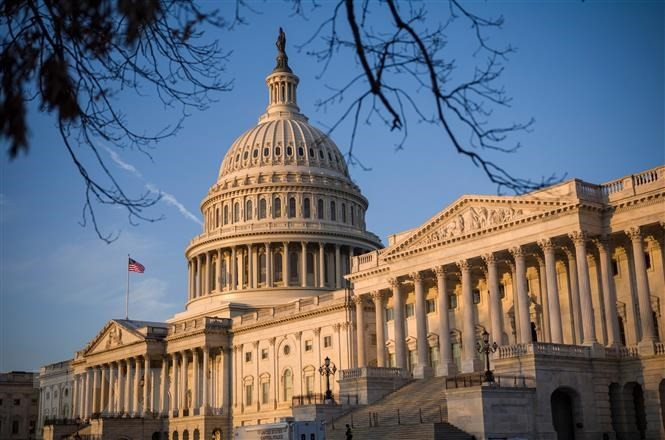In her letter to Speaker of the House Kevin McCarthy, Yellen emphasised that the calculations of the Department of the Treasury showed that it will not be possible to continue to meet all financial obligations of the US government in early June if Congress does not raise or suspend the debt limit by this time. She urged the US Congress to act soon to raise the debt limit so that the government can remain insolvent.
Sharing the same concern with the Treasury Secretary, Director of the Congressional Budget Office (CBO) Phillip Swagel stated that because the tax revenue until the end of April was less than the CBO's projection made in February, the US Department of the Treasury is likely to run out of money in early June.
President Joe Biden immediately called House Speaker Kevin McCarthy to invite him to a meeting with Democratic and Republican leaders in Congress, which is scheduled for May 9. A source familiar with the matter said that President Biden mentioned raising the public debt ceiling to prevent the risk of default. However, in a statement, Kevin McCarthy called on the President and Senate to soon accept spending cuts and avert the crisis.
Last week, the Republican-dominated US House of Representatives approved a proposal to increase the national debt limit, but accompanied by drastic spending cuts. This requirement of the Republicans was vehemently opposed by President Biden and Democrats. According to analysts, Republicans are determined to push the approval of the Limit, Thrift, Growth bill in the House to strengthen the party's position in negotiations with President Biden.
The US economy hit the debt limit of 31.4 trillion USD in January. The US Department of the Treasury must take special measures to continue to pay for Government’s operations. However, if the debt ceiling is not raised, the US Government faces risk of not making payments, seriously affecting the economy in the context that the public debt of the world's No.1 economy still swelling.
The US government has borrowed to help the national economy cope with the impact of the COVID-19 pandemic on the labour market and supply chain. The borrowing took place during the Trump administration and early in President Biden's tenure, when interest rates were low. Now, when the inflation hit historic high level and a series of interest rate hikes were made by the US Federal Reserve to curb soaring prices, borrowing costs are much higher than before.
The Committee for a Responsible Federal Budget (CRFB) estimated that President Joe Biden's policies could add 4.8 trillion USD to the budget deficit between 2021 and 2031. The CRFB warned that over-indebtedness levels would lead to persistent inflationary pressures, pushed the national debt to new records following 2030 and tripled federal interest payments over the next decade or even sooner if interest rates increased faster than expected. The US borrowing has skyrocketed over the past decade. The outstanding public debt of the US stood at 10.6 trillion USD when President Barack Obama took office in 2009, and increased to 19.9 trillion USD when Donald Trump took office in 2017 and 27.8 trillion USD when President Biden took office in 2021.
In early 2018, under the President Donald Trump’s administration, the US government was shut down twice because it could not pass the government funding bill and the federal budget by the deadline. After a three-day shutdown, lawmakers in both houses of Congress reached an agreement to reopen the government with Democrats forcing President Donald Trump's Republican party to discuss immigration.
















